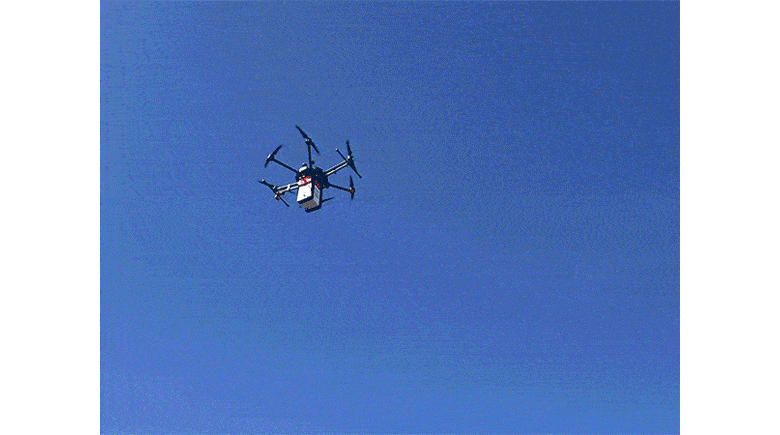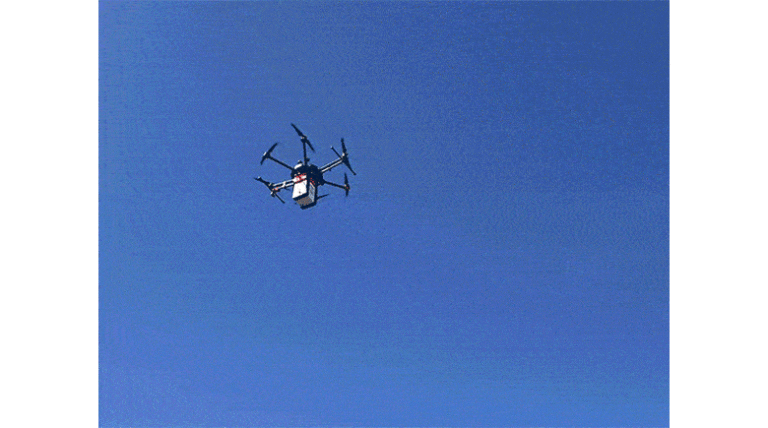
Organ transportation has yet to be substantially innovated. If organs could be moved by drone, instead of ill-timed commercial aircraft or expensive charter flights, lifesaving organs could be transplanted more quickly. A modified, six-rotor UAS was used to model situations relevant to organ transportation. To monitor the organ, we developed novel technologies that provided the real-time organ status using a wireless biosensor combined with an organ global positioning system. Fourteen drone organ missions were performed. Temperatures remained stable and low (2.5 °C). Pressure changes (0.37–0.86 kPa) correlated with increased altitude. Drone travel was associated with less vibration (2.0 G). Peak velocity was 67.6 km/h (42 m/h). Biopsies of the kidney taken prior to and after organ shipment revealed no damage resulting from drone travel. The longest flight was 3.0 miles, modeling an organ flight between two inner city hospitals. Organ transportation may be an ideal use-case for drones. With the development of faster, larger drones, long-distance drone organ shipment may result in substantially reduced cold ischemia times, subsequently improved organ quality, and thousands of lives saved.

